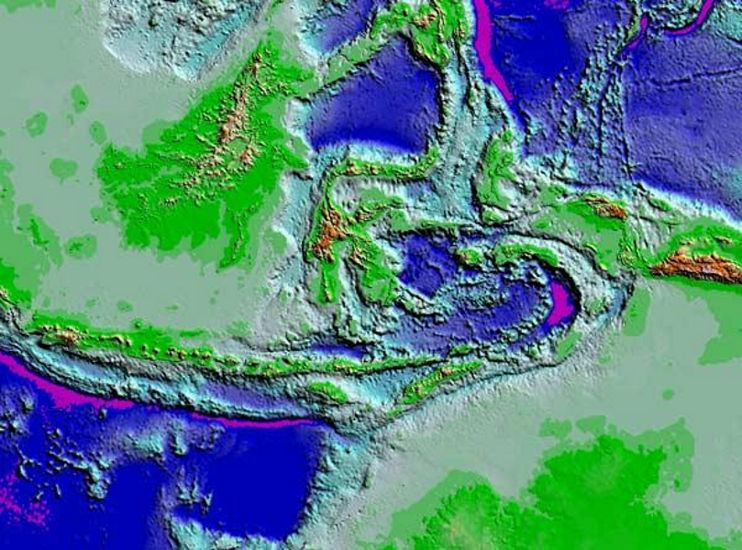 | ||
The Banda Arc (main arc, Inner, and Outer) is a set of island arcs that exist in eastern Indonesia. It manifests the collision of a continent and an intra-oceanic island arc. The presently active arc is located on what appears to be oceanic crust whereas the associated subduction trench is underlain by continental crust. The convergence of the Indo-Australian plates and Eurasia and resulted in the formation of the Sunda and Banda island arcs. The transitional zone between the arcs is located south of Flores Island and is characterized by the change in the tectonic regime along the boundary.
Contents
Map of Banda Arc
Terminology
Some academic literature refers to the arcs by location – so that main arc can be referred to as the 'southern', the 'western' Situated at the centre of three converging and colliding major tectonic plates, Indo-Australia, Eurasia, Pacific, the Banda arc comprises young oceanic crust enclosed by a volcanic inner arc, outer arc islands and a trough parallel to the Australian continental margin. It is a complex subduction setting (where one plate moves under another, sinking into the Earth's mantle), with possibly the largest fold on Earth, extending to a depth of about 650 km (404 mi), in a subducted plate.
Inner/Outer
The Banda Arc is a double island arc formed by the collision of the Indo-Australian plate with the Eurasian plate. Principal islands include Timor, Flores, and Seram.
The feature they apparently formed is a 180-degree arc, which is more than 1,000 kilometres (620 miles) long. Geographically, it stretches across eastern Indonesia, and is delimited by an active inner volcanic arc. The outer arc contains numerous islands, and its internal structure contains young oceanic crust exclusively.
